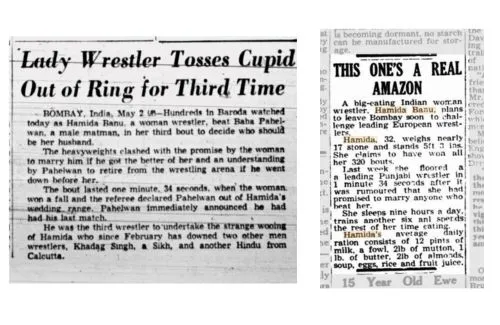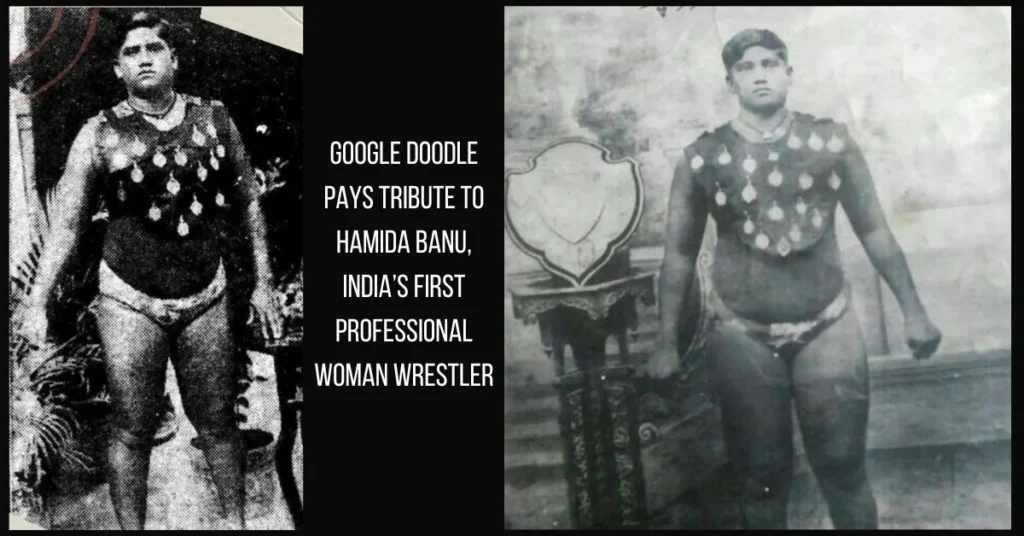Google Doodle Today: In a celebration of women’s achievements, the Google Doodle today (May 4, 2024) commemorates Hamida Banu, a pioneering Indian woman wrestler who defied the odds to break into the male-dominated world of wrestling in the 1940s and 50s. Known as India’s first professional female wrestler, Banu journey to prominence was remarkable, though paved with bold challenges.
In February 1954, when Banu was in her early 30s, she announced that any man who could beat her in a wrestling match would earn her hand in marriage, according to a BBC report. She subsequently defeated two male champions, one from Patiala and another from Kolkata. For her third match that year, she went to Vadodara, where she fought Baba Pahalwan after another male wrestler withdrew, refusing to face a woman. Banu won the bout in just 1 minute and 34 seconds.

Hamida Banu had earned a formidable reputation over a decade. In 1944, she reportedly drew a crowd of 20,000 in Mumbai to watch her face Goonga Pahalwan. Although the fight was called off due to her opponent’s demands, Banu continued to captivate the public’s imagination. Newspapers dubbed her the “Amazon of Aligarh” after her hometown in Uttar Pradesh, the BBC report said.
In a 1954 bout in Mumbai, Hamida Banu reportedly defeated Vera Chistilin, who was called Russia’s “female bear”, in less than one minute’s time.
Banu’s physique and intense training regimen often made headlines. Standing at 5’3″ (1.6m) and weighing 108kg, she reportedly consumed an extraordinary diet — 5.6 litres of milk, 1.8 litres of fruit juice, 2.8 litres of soup, nearly 1kg of mutton and almonds, a fowl, two big loaves of bread, 500g butter, 6 eggs, and two plates of biryani — every day to fuel her nine-hour sleep and six-hour training schedule, according to the BBC report.
In the midst of her achievements, Banu’s career bore the weight of controversies. Allegations swirled around her fights, with some asserting they were predetermined, while others rebuked her for defying societal conventions. The local wrestling federation halted one notable clash with Ramchandra Salunke due to objections, and the BBC reported that she faced hostility from the audience after triumphing over a male wrestler.
Also Read I Simplicity is the Key to a Fulfilling Life: Embrace the Beauty of Living Simply
In his work, ‘Nation At Play: A History of Sport in India’, academic Ronojoy Sen detailed how Banu’s match being followed by a bout featuring two wrestlers, one with a disability and the other visually impaired, highlights the blending of sport and spectacle in these instances.
Banu’s personal life mirrored this turbulence. According to her grandson Feroz Shaikh, Banu’s coach, Salam Pahalwan, attempted to thwart her European journey by injuring her hands. Rahil Khan, a neighbor, disclosed to the BBC that she also suffered fractured legs in the assault, rendering her immobile. “She struggled to stand upright. Though her wounds eventually healed, she relied on a stick to walk for years.”
Following this traumatic incident, Banu faded from the wrestling spotlight, seeking solace in Kalyan where she eked out a humble existence vending milk and snacks until her demise in 1986. Shaikh revealed that her final years were marked by hardship.
Despite the adversities she confronted, Hamida Banu’s legacy perseveres as a tribute to her unyielding courage and her defiance of societal norms, paving the way for women in the realm of sports amidst the constraints of her era.



